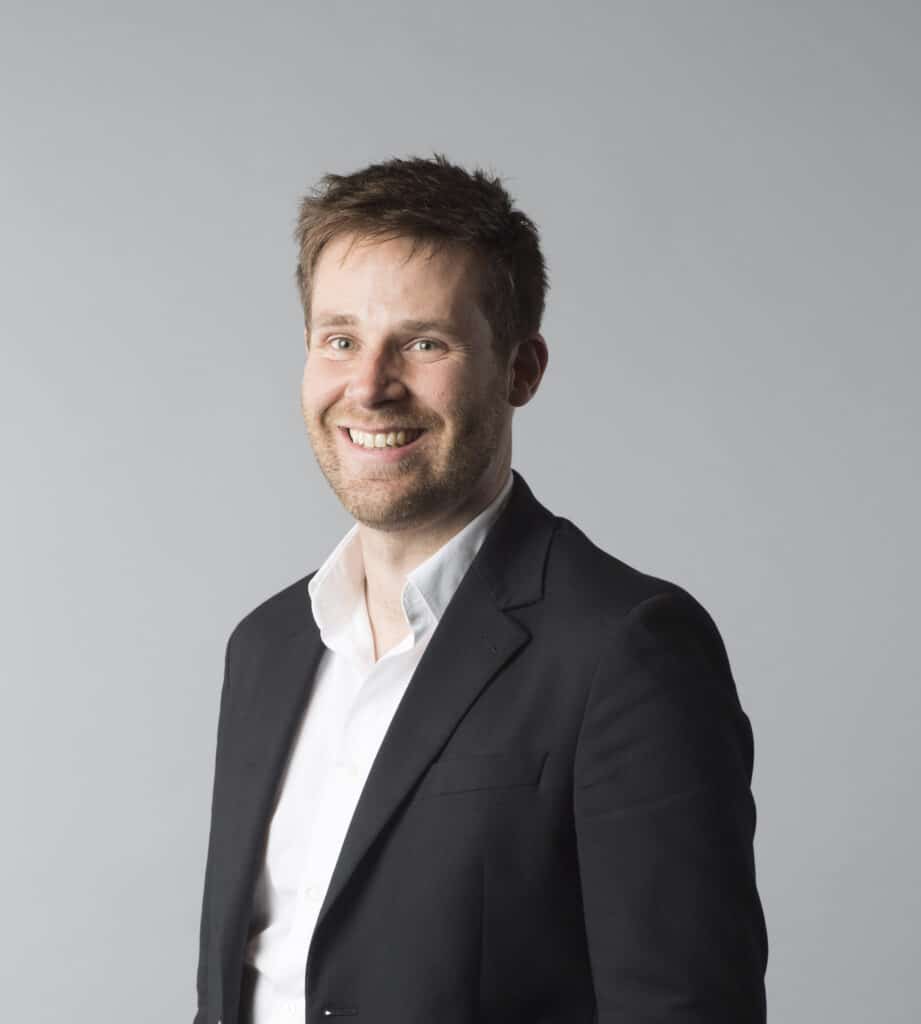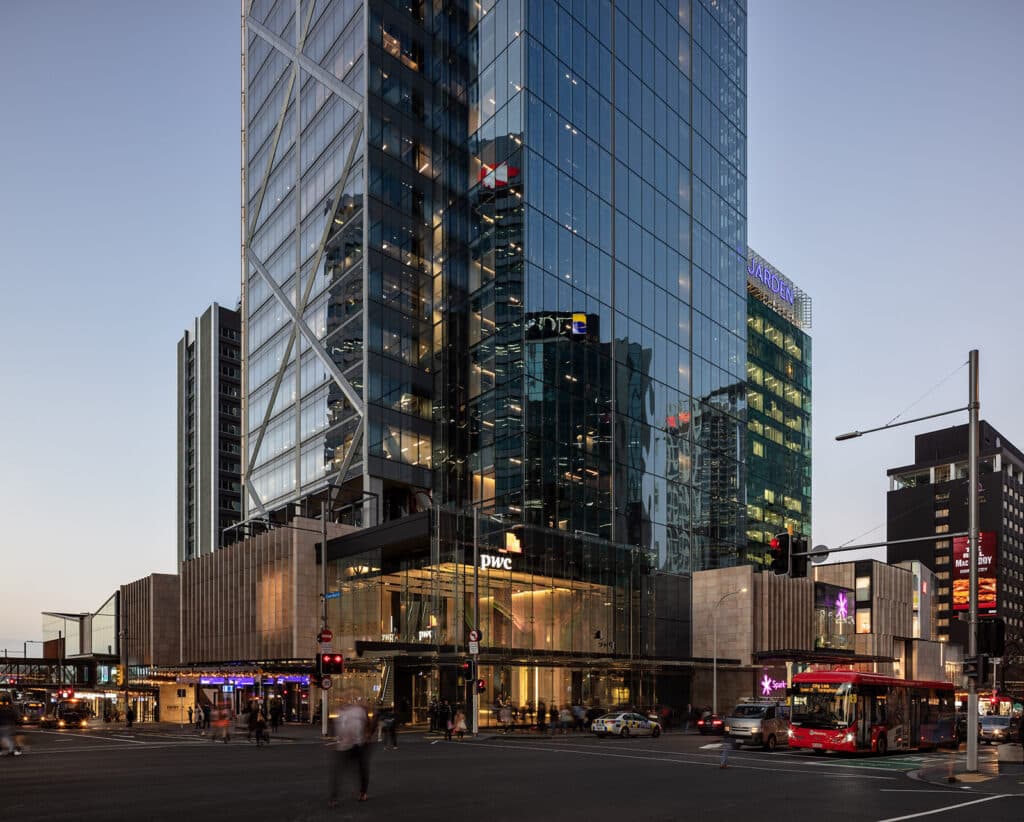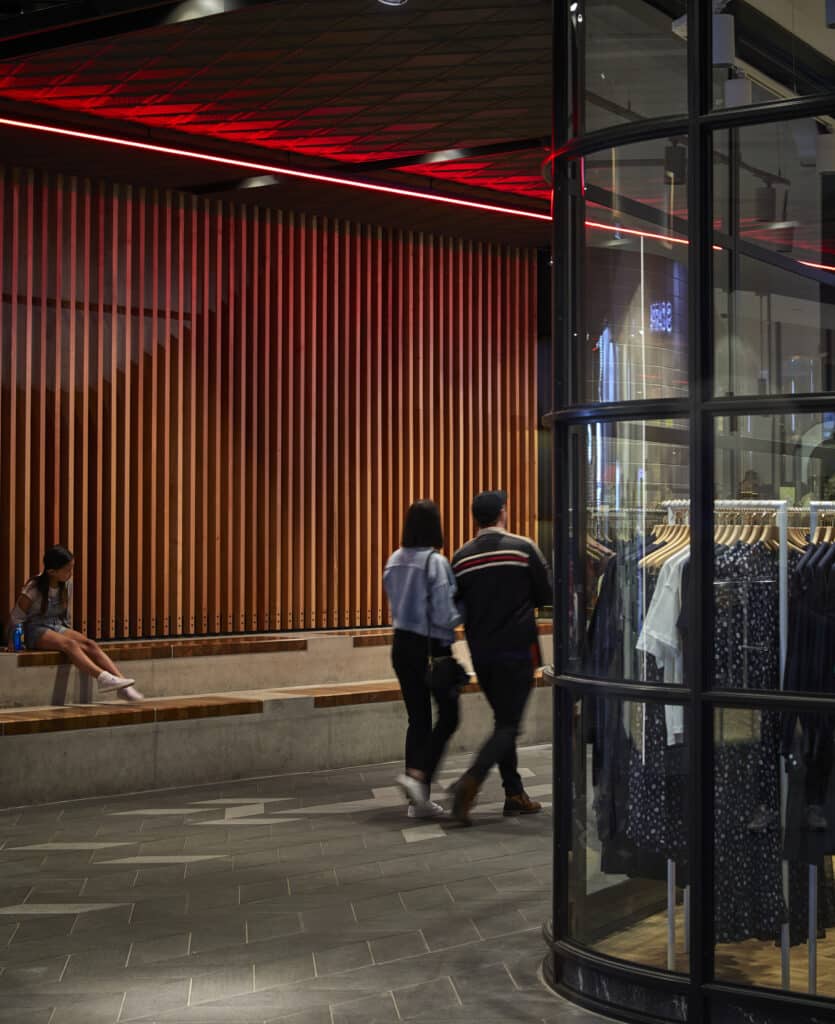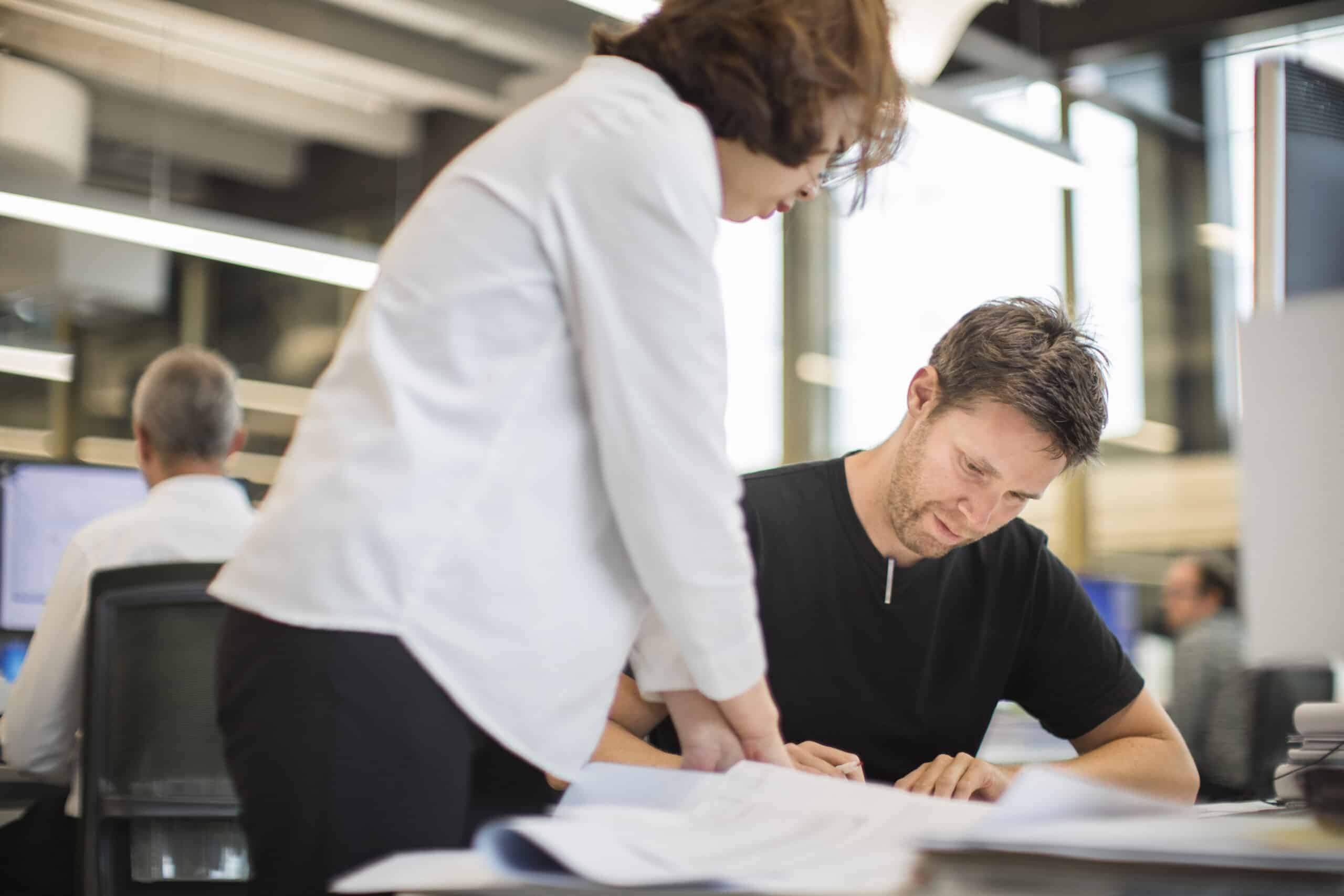For Warren and Mahoney Principal Michael Mason, it’s the goal of “shaping better outcomes” that drives him.
“I’m a believer in always questioning the status quo in order to find new ways to improve what has always been done,” he says.
Seeing a project through to completion and watching as users experience the space for the first time, is what truly motivates him.

Seeing people inhabit and grow into a finished building is a fulfilling part of my job. People will always surprise you in how they use a space in ways you didn’t expect, which is always a real delight to see.
As an office and mixed-use design specialist, Michael has been pivotal in several of Warren and Mahoney’s projects in central Auckland, including the PwC Tower at Commercial Bay, One Queen Street and HB Central.
The 36-floor PwC Tower, in the heart of Auckland’s waterfront district, includes a three-level retail and hospitality precinct incorporating through-site laneways, offering a physical and visual connection to the surrounding city. Michael led the tower through to completion and says it’s a project he is immensely proud of.
“The retail precinct is broken down into eight distinct ‘buildings’ each with their own language – as opposed to being one large podium,” says Michael. “The laneway system in the building extends the laneway network in Auckland’s City Centre Masterplan, drawing people in and changing the way Aucklanders and visitors move about the central city. Its city scale thinking all within one precinct.”
“With Precinct Properties, we had a client that challenged us to look for evolved solutions, which inevitably meant looking offshore to solve problems – it was a very outward-looking process. We’re really proud of what this has achieved for the property industry.
“It’s a project that could comfortably sit within any major city in the world. But from a design perspective, it’s deeply rooted in Auckland.”

Design, culture, sustainability
Warren and Mahoney employ almost 400 people across its eight studios throughout New Zealand and Australia. Founded in 1955 by Sir Miles Warren and Maurice Mahoney in Christchurch, the firm’s designs became the benchmark of New Zealand modernism for many.
Today it is known for exceptional design, combining practicality with forward-thinking outcomes for communities.
Michael was appointed as a Principal of the firm in 2021, after seven years in the Auckland studio.
We see ourselves as designers – but that has a deliberately broad definition at this moment in time. We work at an interesting intersection of culture, sustainability and innovation to generate outcomes that are highly specific for what are often very complex briefs,” says Michael.
He says the firm’s values align with its location in the world, “We see our natural presence as being on the Pacific Rim. Operating as a strategic partner for our clients in the region, we strive to challenge norms and bring an adventurous spirit to our work to add value.”
Michael grew up in Christchurch and the city’s Town Hall, designed by Warren and Mahoney, is one of the buildings he notes attracted him to the built environment at a young age.
“I found buildings like the Christchurch Town Hall clever. I was attracted to the way the built form could shape experiences. This, along with a natural wont to problem solve, attracted me to architecture.”
While architecture is thought of as a focus on buildings, he says design elements must consider their environment.
At the outset of every project, you begin with what a building can do for its users - but you quickly learn that the other real opportunity is the positive influence that a building can have on its urban context and surroundings – Commercial Bay is a good example of that."
Auckland grows up
Michael left Auckland in 2006, working in London for eight years. Michael says he gained some great experience across a range of noteworthy projects. That included the British Embassy in Algiers – a project that “pushed the envelope” in aspects of construction technology.
He was also involved in the redevelopment of London’s King’s Cross Station, leading the refurbishment of its Eastern Range. The project had a significant adaptive reuse element, with its heritage reaching back to 1852. As a large-scale project, it came with the added complexity of ensuring it remained operational for the 47 million people who pass through it each year.
When Michael decided to return to Auckland in 2014, he had wondered whether the city would have moved forward. “Auckland now feels like a more mature, connected and unapologetic place than when I left for Europe, with a confident and unique identity.”
He says the property industry has grown with that new confidence and is part of the change. Having specialised in commercial architecture, Michael recommends newcomers to the industry seek a range of experiences before jumping into a particular specialisation.
Go broad. Don't specialise too early. If you want to specialise, you need to come from a position of knowledge."
Michael notes that while overseas, he took as many opportunities as possible to gain that broad knowledge and experience.

Rethinking work, cities
Michael says the industry is tracking towards much more sustainable buildings due to both “tenant demand and regulatory obligations”. He says the industry’s approach to addressing environmental challenges will continue to evolve.
“In the past ten years, we have been working to reduce operational carbon but over the next decade, leadership in that space will focus on embodied carbon,” he says.
He expects adaptive reuse and mass timber construction to become much more mainstream to reduce the carbon inputs into buildings.
Michael also expects that the post-pandemic CBD will continue to evolve. Covid accelerated the trend of workers splitting time between their office and working from home, changing their relationship between the workplace and technology. He believes the hybrid mode of working allows people to rebalance their lives and is here to stay.
“Office spaces need to evolve to facilitate multitasking and collaboration,” says Michael, “while dedicated work can happen from wherever is best at the time.”
Our cities and buildings must reflect this new way of working if we are to attract people back into the city centres. The key to that is moving beyond single-use precincts.”
“High-quality urban spaces, mixed with good hospitality and retail, will make city centres attractive to local businesses and residents,” he says.
“The ecology of the CBD needs to be diverse and support innovation and creativity. They need to be places that have life and energy.”
Revitalising offices and CBDs to attract people back to them is crucial, and a lot of work is still required to understand what the right balance and dynamic will be.
I was in London recently, and they're well ahead of us on the Covid curve but still finding their way in terms of what a post-pandemic workplace will look like. Our Australian studios are also reporting a real buzz coming back to their cities – driven by a real focus on activation at an organisation and city level."
Industry collaborations and conversations
Michael sees the Property Council as a valuable community for everyone across the industry to take part in.
I think you've got to be part of the conversation. The Property Council is a great leveller – it's a forum where all those in the industry can move issues forward and advocate at the same table."
He says getting involved in the Council’s different projects and groups is the best way to get the most from membership.
“We recently joined the Sustainability Working Group, where we seek to promote climate resilience and support low-emissions urban environments.
When looking at the industry’s challenges over the coming decade, he says carbon reduction is “far and away” the most critical issue.
The industry needs to work together to meet Net Zero goals and as a collective, we can ensure we have access to the right materials at the right times. We need to start using more timber, and the supply chain needs to keep up with the demand that will come."
Michael notes the industry faces complex challenges and opportunities in the near future – but with industry collaboration made possible through forums like the Property Council, it is well equipped to tackle them.
About the City Shapers Series
The City Shapers Series is a collection of interviews with some of Property Council’s most prominent members. The series is about showcasing the people in property – the city shapers who lead extraordinary teams, develop exemplary projects and demonstrate the very best of the New Zealand property industry.
We aim to highlight the property industry’s role as an important contributor to New Zealand’s economy and our members as ‘city shapers’, building communities for Kiwis to live, work, play and shop.
Author: Felicity Wolfe

